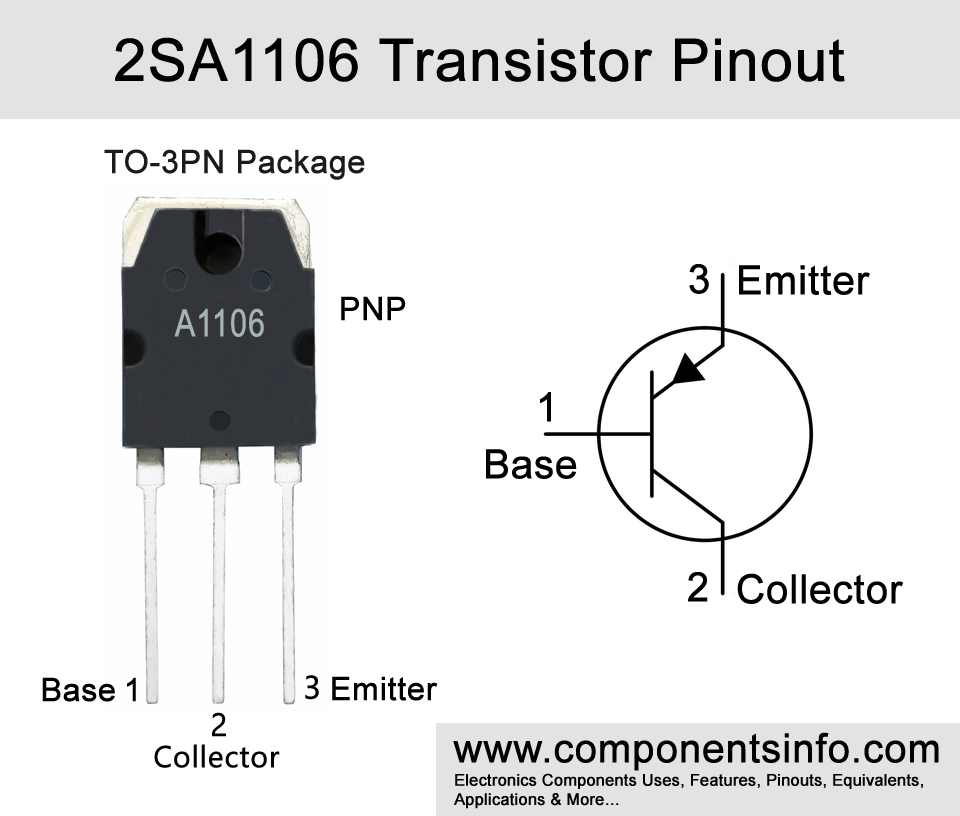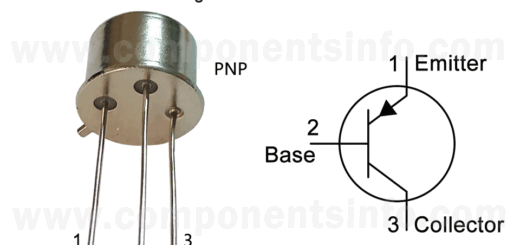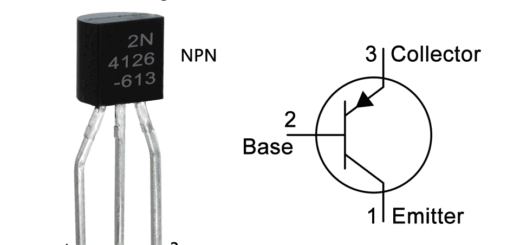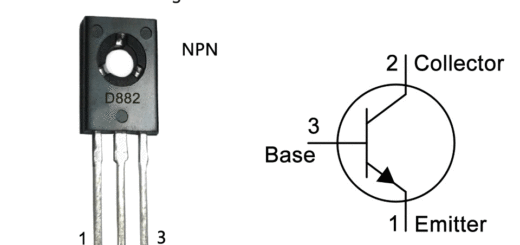2SA1106 Transistor Pinout, Equivalents, Features, Applications and More
The post explains 2SA1106 or A1106 transistor pinout, equivalents, features, applications, safe operating guidelines and other details about this device.
Absolute Maximum Ratings:
- Package Type: TO-3PN
- Transistor Type: PNP
- Max Collector Current(IC): –10A
- Max Collector-Emitter Voltage (VCE): –140V
- Max Collector-Base Voltage (VCB): –140V
- Max Emitter-Base Voltage (VEBO): –6V
- Max Collector Dissipation (Pc): 100 Watt
- Max Storage & Operating temperature: -55 to +150 Centigrade
NPN Complementary:
NPN Complementary of 2SA1106 is 2SC2581
Replacement and Equivalent:
2SA2151, 2SB863, 2SA1492 , 2SA1943, 2SA2120, 2SA1491, 2SA1516, 2SA1805, 2SA1146, 2SB1429, 2SA1265, 2SA1301, 2SA2121, 2SA1302, 2SA1962, 2SA1186, 2SA1942, 2SA1695, 2SA1386, 2SA1303.
2SA1106 Transistor Explained / Description:
2SA1106 is a PNP transistor available in TO-3PN transistor package. The transistor is designed to be used in DC to DC converter and high power audio amplifier applications. Features of the transistor are high collector-emiter and collector-base voltage, good collector current, collector power dissipation of 100W and availability of its NPN complementary transistor.
Looking at the absolute maximum ratings of the transistor the emitter-base voltage is -6V, collector-base voltage is -140V, collector-emitter voltage is also -140V, base-current is -4A, collector current is -10A, collector power dissipation is 100W and max storage and junction temperature is -55°C to +150°C.
Some electrical characteristics are minimum DC current gain of 30, 20MHz transitions frequency and max collector-emitter saturation voltage is -2.0.
How and Where to Use the Transistor:
Although it is designed to be used in audio amplifiers and DC to DC converters but can also be used in switching applications.
To use the transistor as a switch connect its emitter pin with the positive supply, apply signals to its base pin through a suitable current limiting resistor (the signals through which you want to control the output load). The load will be connected between the collector and the negative supply of the circuit. A suitable current limiting resistor should be required between the collector and the load if you want to control the current going to the load.
To use the transistor as an amplifier connect its emitter pin with the positive supply of the circuit, apply audio signals which you want to amplify to its base pin through a suitable electrolytic capacitor (normally aN electrolytic capacitor from 1uf to 10uf value is used). Connect the collector pin with the sound device such as a speaker through another electrolytic capacitor of same value which you have used at the input, and the negative pin of the speaker will be connected with the ground or negative rail of the circuit.
Applications:
Audio Amplifier Stages
Switching load of up to -10A
DC to DC Converters
High voltage applications (Up to 140V)
Safe Operating Guidelines:
Here are the safe operating guidelines of the transistor:
- Do not drive the transistor to its absolute maximum ratings and always stay at least 20% below from these ratings.
- Always check pin layout before using in the circuit.
- Store or operate at temperatures above -55°C to 150°C.
Datasheet:
To download the datasheet just copy and paste the below link in your browser.
https://www.alldatasheet.com/datasheet-pdf/view/263466/ISC/2SA1106.html



